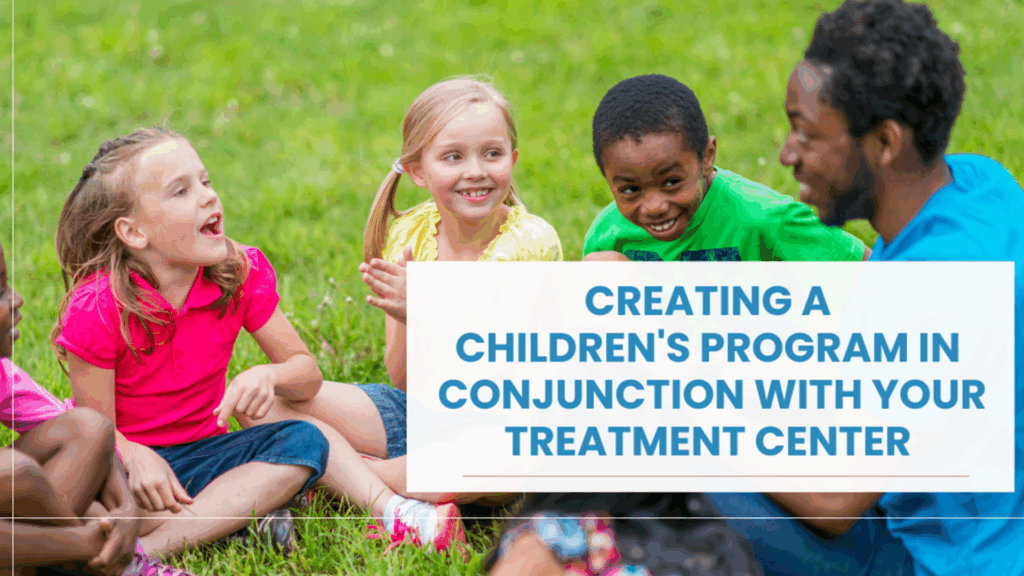First, thank you—and congratulations!
By even thinking about how to include children when a parent or caregiver is in treatment for a substance use disorder (SUD), you’re taking a critical step that too many programs overlook. Children are often the unseen, unheard members of a family affected by the disease of addiction. But their needs are real, urgent, and—when addressed—can be transformational for the whole family.
A recent University of Michigan study revealed that 1 in 4 children in the United States lives in a household where a parent has an SUD. That’s 25% of all children in this country—a staggering figure that reinforces the urgency of including children in every aspect of care planning for families dealing with substance use challenges.
Why You Must Include Children
When a loved one is in treatment—whether for residential care, outpatient services, or recovery support—children in the home experience the illness too. They witness the chaos, the absence, the pain, and the silence. They often blame themselves or carry the emotional weight of the family’s struggles. And too often, they are left out of the healing process.
Creating a structured, trauma-informed program for children in conjunction with your treatment center helps break that silence. It helps children name what they’ve experienced, understand it’s not their fault, and learn healthy coping tools that can support them for life.
So, You've Decided to Start a Children's Program—Now What?
Here’s a roadmap of key considerations and what to expect as you design and implement a children’s program aligned with your center’s services.
Build Your Program Framework
Once you’ve created a curriculum, trained your staff, and established your program dates, here’s what you need to evaluate:
• Will children come only from your client families, or will you accept referrals from community partners?
• What ages will you serve? (NACoA’s Children’s Program Kit offers content adaptable from kindergarten through high school completion.)
• Have you planned for trauma-informed practices in your physical space and in staff training?
• Are your staff background-checked and trained in youth engagement and safety protocols?
• How will you handle registration and communication with parents or guardians?
The details matter—deeply. NACoA’s Children’s Program Kit is one of the most comprehensive and cost-effective guides to help you navigate every part of this process. It includes everything from logistics and activities to trauma-informed frameworks and sample schedules. It’s built from decades of field experience and tailored for children affected by family addiction.
How to Get Children Enrolled: It’s More Than Just a Flyer
This part surprises many providers: enrolling children in a program like this is not quick, and it’s not transactional.
A parent or caregiver—whether in recovery or affected by a partner’s SUD—is being asked to entrust you with their child. That trust is hard-won, and rightly so. Expect multiple conversations before enrollment—three to five phone calls are typical. These conversations help:
• Reassure caregivers that you won’t judge or speak negatively about the parent with a substance use disorder.
• Build a connection between the trainer and the family. (They often want to know exactly who will be talking to their child.)
• Clarify what the program is—and what it is not.
This outreach takes persistence, professionalism, empathy, and skill. It is not “plug-and-play” programming. It’s careful, compassionate, and deliberate work.
Marketing and Communication
You’ll need more than printed brochures. Consider:
• Informational sessions for referring agencies and partners
• One-on-one calls or Zooms with parents
• Supportive, non-stigmatizing language that explains the purpose of the program
• Testimonials or stories (anonymous or parent-approved) to show outcomes
Children don’t just join these programs—their caregivers choose to let them join. And that choice is made through relationship-building and deep listening.
Sustaining the Program: Aligning Needs and Resources
To create a program that lasts, you’ll need to:
• Continually assess the needs of the families you serve
• Maintain a pool of trained, reliable, and empathetic staff
• Document and share outcome data—not just for funding, but to honor the voices of children and families
• Engage in regular program evaluation, supervision, and feedback collection
• Seek support from partners and funders who understand the intergenerational impact of SUD
• Provide continuous aftercare for the children in the program so they have continued support
Final Thoughts
Creating a children’s program alongside your treatment services is one of the most impactful things your center can do. It says to children: You matter. You’re not invisible. And you’re not alone.
Yes, it takes planning, care, and patience. But when you see a child draw a picture of their family with a smile again, or hear a teenager say, “This isn’t my fault,” you’ll know it was worth every moment.
Ready to start? NACoA’s Children’s Program Kit can help guide the way.
